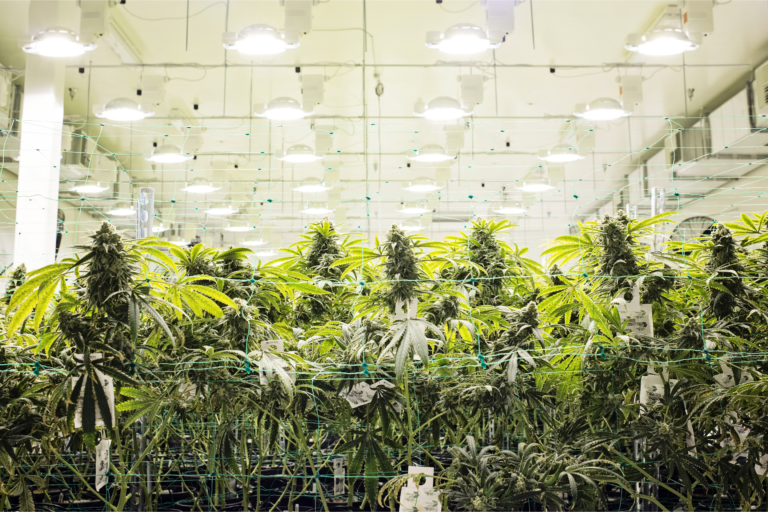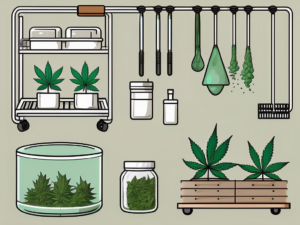After helping grows revamp and retool their cultivation management in ten states over three years, PlanaCan co-founder Nelson Brassell shares his thoughts on the most important skills he's seen in cultivation leadership at the grows he's worked with.
Before I dive in, let me say, that growing cannabis is hard, and growing in a commercial environment, at scale, is harder. On top of the complexity of in-the-grow operations, external market forces also affect your cultivation’s bottom line. Between these two challenges, running a consistently successful cultivation, with reliable yields, and profits, month after month, is a tough needle to thread.
That being said, there are certain skills, and mindsets that I’ve seen in leadership at the businesses we work with that consistently lead to better outcomes for the cultivation, regardless of whether they have 2k of canopy, or 200k, grow indoor, outdoor, hydro, or in soil.
I want to distill down what’s remarkable about these cultivators and relate those skills and mindsets that I’ve seen be most impactful, and that are non-negotiable for cultivation leadership to have.
My hope is if you’re looking to get into the industry, or just got promoted to lead your grow, you can use this article as a roadmap to help your development as a cannabis cultivation manager, and leader.
Diagnose, and adapt
The first thing I learned (quite emphatically) while talking with growers at the cultivations we work with was that things change, constantly. The size and layout of their cultivations, their personnel, their plant treatments, and the markets they sell in change constantly.
So, if change is going to present, and unpredictability is the rule, then to be successful in running a cannabis cultivation means being able to identify, and adapt to whatever changes that inevitably come.
At one of our flagship grows, Garden First, they’ve had a laundry list of problems they’ve had to overcome since opening their doors for business 2017. It started from their first batch of plants – they lost most of it because of an HVAC failure via a shoddy installation. They had to react immediately by completely gutting the system in place, and installing something that could handle what their rooms needed.
While this issue hurt their bottom line for the next year, Garden First’s ability to diagnose the issue, look at their options, and then adopt the right solution quickly, ensured they’d stay in business despite the setback.
Another example from Garden First – after their first year in business, the Oregon markets became completely oversaturated because the state chose not to cap the number of licenses they granted. Again, Garden First had to figure out what to do to stay in business as growers from all over the U.S. set up cultivations and the price per pound plummeted.
They quickly made changes – firstly, ownership started taking longer shifts in the cultivation to save on labor. They also focused on maintaining yields per light, along with the quality of the buds to make sure they were squeezing everything they could out of the square footage they had. Over time, the weaker businesses with less efficient overhead got shaken out, and Garden First cemented their foothold as a top-tier grow in the state. A few years later, they even had their own feature on CannaCribs! You can watch that video here.
Whatever issue you’re dealing with in your cultivation, day-to-day, or long-term, it’s important to diagnose what’s happening, and then adopt the right solution that will help you deal with whatever hurdle you’re encountering. That’s really what running any business, or cultivation is. The challenges never stop coming, and it’s your job to decide what you and your team do next.
Effective Harvest Management
Most commercial cultivations run perpetual harvest cycles, where there are always multiple batches of plants moving through the grow, each in a different phase of their plant growth. This method allows for the most efficient use of the grow’s square footage and allows for a cyclical and consistent yield of product to sell.
While being very efficient, this method of growing also demands knowing what each batch needs, each day, and sticking to that schedule to get those plants from clone to harvest, on time. This is because if a certain step is missed in one batch of plants, it will affect every other batch’s timing since they all move through the different rooms in the grow concurrently.
If work is repeatedly missed, or delayed, scheduling starts to become fragmented, and output goes down. This is the number one issue we see with cultivations that come to us looking for a solution.
On the flip side, working with our most well-run cultivations, their ability to stay on top of what needs to be done, and when, with each harvest cycle, and its relation to the harvest cycles around it, is a huge differentiator in their overall success.
There are many ways to effectively manage cultivations. I’ve seen whiteboards, text threads, spreadsheets, and even a single dedicated scheduler that moves around the grow during the day to make sure that each technician knows what to do next. Our platform is a software solution designed to take the place of those methods.
Whichever way a leadership chooses to manage their cultivation, knowing what needs to happen, where, and who needs to do it, daily, creates the best chance for consistent success, over time. Staying on top of each individual task, for each individual harvest, is a non-negotiable to keep things running smoothly, and consistently. This leads to better yields, and less confusion and frustration in the cultivation.
Standardize everything
There’s a trite saying that you’re only as good as your worst habits. I’ve found this holds true for cannabis cultivations.
This is because in the grow, it’s not just what needs to be done for a certain batch of plants, it’s how you’re doing it, that will make an impact on whether you’re growing efficiently, as opposed to spinning your wheels, even though you’re technically checking off each step in the treatment plan (you can find a deep dive on that subject here).
In the most successful grows we work with, there’s a strong emphasis on standardizing the specific procedure for each task that needs to be done in the grow.
A direct example of this is defoling a group of plants. If there’s a task on the whiteboard that lets your team know there’s a defol that needs to happen, great, but you’re only really halfway there. Relating how to specifically do that defol is just as important. Whether that’s an onsite training, or a video for them to watch, these kinds of SOP’s create a direct difference in the yield of that plant.
Standardizing work is also the other biggest hurdle after figuring out the “what”, that we see when working with our customers. It’s one thing for leadership to know what needs to be done (and the first issue we often address), and another to make sure everyone else in the cultivation knows why and how they’re doing it.
Communicate systematically
Everyone in the cultivation needs to be on the same page, daily! You can have great a great grow techniques and detailed SOPs, but if you can’t relay that info to your team effectively, then it’s all for nothing.
Communication is vital when things change. The growing environment is semi-fluid, so, for example, if a batch of plants needs an extra day or two in veg before being repotted, being able to notify everyone on your team quickly is paramount.
In general, a highly communicative cultivation means way less confusion. Less confusion means less stress. When things inevitably do go wrong, or they change, you can adapt quickly (see above).
How do the most successful grows we’ve seen communicate? It depends on the size of the operation. If you have 5k of canopy to manage, communication is lateral – everyone works in every part of the grow, and everyone is communicating with everyone else to see what’s next.
For a 10k canopy and up, communication is usually vertical – at the top is a director creating the schedules for each batch and employee or technician. Then, he relates that info to team leads or managers. From there, each of those team leads is, you guessed it, is leading a team to complete the work. Often, at the best large-scale businesses we work with, those team leads are the lynchpin – they are responsible for what is happening on the ground, and reporting back up to leadership each day.
Keeping the continuity from director, down to a technician, is often where gaps start to show. If every level of the operation doesn’t know exactly what’s happened (and what didn’t) for each batch, room, or table, you’re much less likely to maintain success over the long term.
The takeaway
When leading a cannabis cultivation problems, roadblocks, and stress are constant. Your ability to face each problem head on, and solve them with a framework that works for you, and the people you lead, is what will make you an effective manager, and enable your cultivation to be a successful business.



